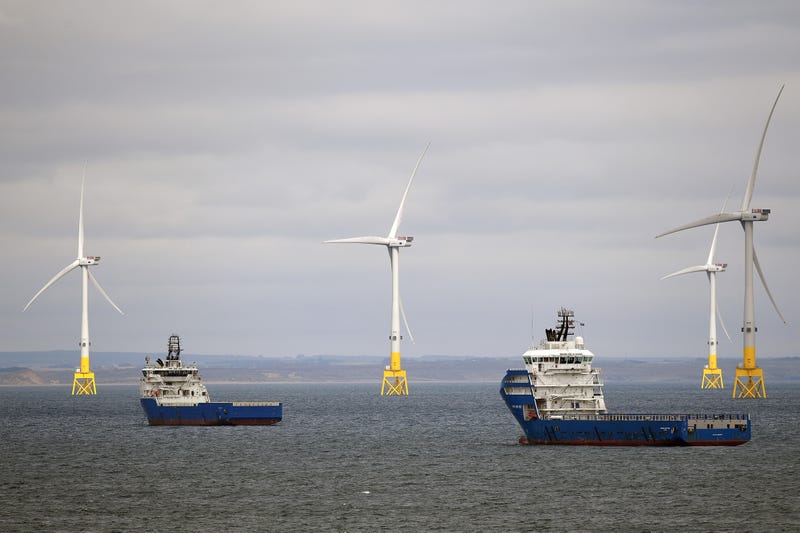- California is going big and moving forward in floating offshore wind power generation.
- California plans to produce 10 to 15 gigawatts of offshore wind energy by 2045.
- The government set a target for offshore winds of at least 3 GW by 2030, 10 GW by 2040, and 20 GW by 2050.
California is going big and moving forward in floating offshore wind power generation. This discussed by the State, federal and industry leaders join forces at the Pacific Offshore Wind Summit. This was done to highlight the importance of The floating offshore wind power plant could later benefit in terms of renewable technology and meet the country’s work, climate and clean energy goals.
Strong winds on the West Coast, used by the California government as a source of electrical energy. California plans to produce 10 to 15 gigawatts of offshore wind energy by 2045. According to the state Energy Commission, that electrical capacity is enough to power between 10 million and 15 million homes. The goal is to develop the world’s leading floating wind industry which is growing rapidly. In addition, to generate the largest source of wind power of any state, including surpassing New York’s 9 gigawatts by 2035. To get there, we urge California to go big and move forward.
This is in line with California’s SB 100 which mandates the state to achieve 100% renewable energy by 2045. And offshore wind is part of the plan to achieve it. Then, nationally the government set a target for offshore winds of at least 3 GW by 2030, 10 GW by 2040, and 20 GW by 2050. This target is in line with the Biden Administration’s goal of 30 GW for US offshore wind by 2030 and aiming for 110 GW by 2050.
Read more:
California’s draft plan includes an initial goal of 3 gigawatts of offshore wind for 2030—10% of the federal target. The initial 3 gigawatts of West Coast wind power will come from “full development of the Morro Bay Wind Energy Area (WEA) or a combination of partial development of the Morro Bay WEA and Humboldt WEA.
For context, the 3,437 miles of California’s coastline is only about 3% of the total mileage of the US coastline. Of course, not all of them are suitable for offshore wind turbines. And by 2021, the entire US energy grid, including small-scale solar, will have a generating capacity of about 1,170 gigawatts.
Last year, the government opened the two California sites. Eatu in Morro Bay, another off Humboldt for offshore floating wind turbines.
Generally, offshore wind farms are located in fairly shallow areas. It aims to secure the turbine directly to the seabed with concrete or steel poles. However, floating wind farms are a relatively new technology that allows turbines to be tethered by cables in areas of deeper water.
The first floating wind farms began generating energy in 2017 off the coast of Scotland. In 2021, only two additional operational floating farms have appeared, the Scot and the Portuguese. Offshore winds, which are more conventional, have taken off in Europe in recent decades.
But basically everywhere offshore wind and floating farms have been proposed or built in the US. However, it received a strong reaction. In Maine, lobster fishermen are concerned about the effect long power lines have on their ability to catch fish. Although a transition to clean energy production may be necessary to keep lobster populations alive. On Long Island, some property owners in the Hamptons are battling offshore wind farms. They reasoned unfounded fears of “violent releases of energy” and “electromagnetic fields”.
Read more:
Last September, a group of commercial fishermen sued the Ministry of Home Affairs. This is because they did not sufficiently consider their concerns in approving the 62 turbine project near Martha’s Vineyards.
Recently, in California, many stakeholders, including members of the Northern Chumash Tribe have criticized and opposed private proposals. In which case, the proposal contains plans to float eight wind turbines within the confines of what may be a tribal marine sanctuary. Much of the opposition there boils down to specific, sensitive locations. There is also a lack of existing data on the environmental impact of wind farms in similar places. And the company involved, which is not a member of the responsible development group Offshore Wind California.
Although it is valid to assess and consider the offshore wind industry and environmental impacts. However, it is important to remember that the alternative to expanding this energy project is to keep burning fossil fuels. There are data that undeniably show the dangers posed by the status quo of oil, gas and coal, both to humans and the natural environment. If you really want to ensure that the oceans are protected, you need as many gigawatts of renewable energy as possible.
Regardless, the new California draft has a purpose that is likely to cause additional controversy. But, for now they are non-binding and early. The final announcement of the plan will be made on May 24.
Editor: Riana Nurhasanah
References:







Comment closed